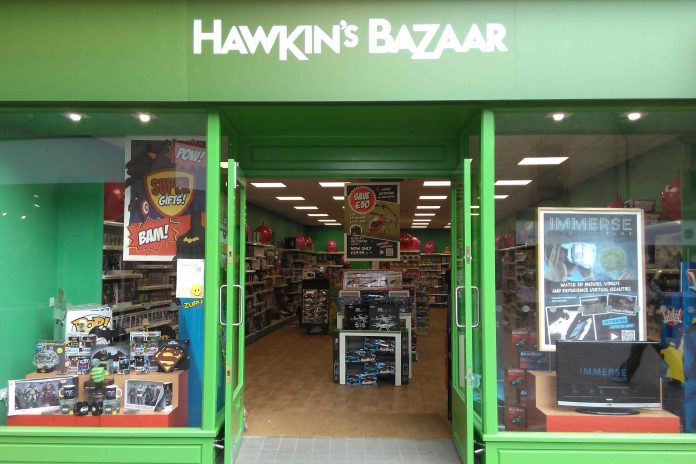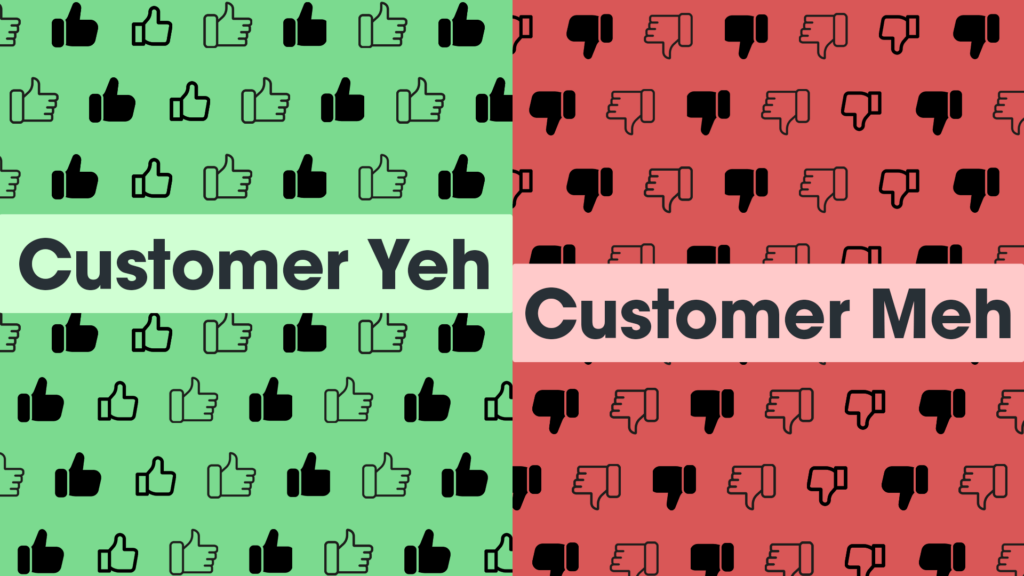A BRIEF TIMELINE
1973: In Northumberland, Sid Templer set up a small mail order toy company known as Tobar – derived from his two sons’ names – Toby and Barnaby.
1976: Tobar moved premises to an old disused pub in Suffolk, formerly named the Hawk Inn.
Templer, realising that the company could save a line in their address, persuaded the Post Office that they could cope with a transition from Hawk Inn to Hawkin & Co.
Subsequently, Tobar Group became the name of the parent company that owned Hawkin’s Bazaar before its first administration in 2011.
1989: Tobar Group moved to a former farmhouse, Elm House in St Margarets, while Hawkin’s Bazaar was still selling as a mail order company. At this point, Templer’s son Toby took over as chief executive of the group. Also around this time, the mail order retailer’s first bricks-and-mortar shop opened in Salisbury, named Hawkin’s Bazaar.
READ MORE:
1990: Tobar Group begins selling Hawkin’s Bazaar products to European markets.
1998: Hawkin’s Bazaar launched a website.
2007: Tobar Group moved from St Margarets to a £10 million facility in Worlingham. It launched a sub-brand: Stocking Fillers.
2008: Hawkin’s Bazaar joined social media, creating a Facebook and Twitter account.
2010: Tobar obtained its first European wholesale branch to complement its range of international distributors and agents built up across Europe over the years.
2011: Hawkin’s Bazaar went into administration for the first time. Administrators Zolfo Cooper were drafted in to manage the process. The retailer closed 46 locations, resulting in 302 job losses. It continued trading with the remaining stores it had left.
Peter Saville, an administrator from Zolfo Cooper, said Hawkin’s Bazaar faced “exceptionally challenging trading conditions” at the time.
Private equity provider Primary Capital eventually bought Hawkin’s Bazaar and its parent company Tobar Group through a management buy out.
2012: David Mordecai hired as the chief executive of Tobar Group.
Hawkin’s Bazaar relaunched its website, revealing new features, including the Hawkin’s Bazaar blog, the Gift Finder and the Wishlist.
By the end of 2012, Hawkin’s Bazaar had 27 stores around the UK.

2013: Tobar Group set up its head office in Norfolk and a warehouse in Eye.
2015: The group was bought in a management buy-out supported by private equity firm Merino.
2016: While under the ownership of Merino, Tobar Group acquired Bluw Limited, a Scottish toy company.
2018: Hawkin’s Bazaar made a £978,344 loss on sales of £15.3 million, according to its most recent full-year accounts filed at Companies House. Gross profit margin was at 47.7 per cent in 2018, compared with 50.4 per cent in 2017. To add to the retailer’s woes, turnover dropped 3.16 per cent, reaching £15.3 million in 2018, compared with £15.8 million in 2017.
At the time, Hawkin’s Bazaar blamed “challenging trading conditions within the retail sector” for negatively impacting performance in 2018. “The rise of ecommerce continues to result in lower footfall in the shopping centres and high streets,” it said.
2019: Tobar Group acquired an educational company, Kit for Kids. Merino put Hawkin’s Bazaar up for sale.
2020: On January 23, Hawkin’s Bazaar fell into administration for the second time after failing to find a buyer. Moorfields Advisory partners Tom Straw and Simon Thomas were appointed joint administrators. It said it suffered a “challenging Christmas period”.
Hawkin’s Bazaar has 18 locations in the UK.
THE REASONS
Gift, novelty and/or toy retailers are facing a particularly challenging period today due to the shift towards online. With retailers such as Amazon dominating the market, businesses in the sector need to improve their offerings and learn how to remain relevant.
Although Hawkin’s Bazaar joined the online world in the late 1990s, its social media presence lacked the depth of communication that rivals such as Pylones, Suck UK and Flying Tiger offered.
It also failed to keep up with current trends, and retail consultant Graham Soult said Hawkin’s Bazaar’s offerings weren’t suitable for the “Greta Thunberg-minded individuals” of today.
“People are more careful with their spending now,” he told Retail Gazette.
“Hawkin’s Bazaar has a chance of survival if it closes underperforming stores”
“They’re reluctant to buy pointless products, whereas 20 or 30 years ago, buying a plastic novelty toy made a nice gift.
“Retailers are faced with a challenging job in this day and age, those who sell plastic or wasteful products fall behind.”
Discount Vouchers chief executive Kathryn Wright agreed. She added that Hawkin’s Bazaar had trouble understanding its customers.
“Hawkin’s Bazaar has a chance of survival if it closes underperforming stores and continues the business online,” she said.
“They could even occupy a concession in a department store to maintain a form of high-street presence, which would be beneficial and possibly more cost-effective than an entire solus store.”
Last week’s administration wasn’t the first catastrophe for Hawkin’s Bazaar, as it went through a similar process back in 2011. Retail consultant Richard Hyman argued that Hawkin’s Bazaar’s “rescues” were focused more on cost cutting than any “meaningful restructuring” of the customer proposition.
“Hawkin’s Bazaar’s demise cannot be regarded as a big surprise,” he said.
“As the dust settles, it is increasingly clear that Christmas 2019 was very weak.
“Wall to wall discounting, coupled with deep economic uncertainty, meant that the trading respite so many retailers were hoping for in the ‘golden quarter’ never really materialised.
“For a business like Hawkins Bazaar, which is even more dependent than most, the weak trading background has clearly brought things to a head.”
Widen Enterprises head of marketing Sairah Mojib said Hawkin’s Bazaar’s demise was further enhanced when “it struggled to compete with flexible ecommerce players offering convenience and often cheaper prices”.
“Hawkins Bazaar is a funny business in that it tends to trade as a pop up”
Inevitably, retailers can fall foul to price matching when what they sell is branded and available in many other places. Toys R Us is a prime example of a retailer that fell victim to this.]
The US-based toy retailer joined the online toy market in 1998 and 20 years later it collapsed into administration. Toys R Us closed down all stores in its UK market by April 24 2018, and 2054 colleagues were made redundant as a result.
While the toy giant was declining, The Entertainer pushed ahead with sales growth and expanding as it capitalised on Toys R Us’s downfall.
Mojib said that in order for Hawkin’s Bazaar to avoid a similar demise to Toys R Us, it needed to maximise its brand assets.
“Just look at the success story that is fashion retailer Boohoo, which recently reported record trading during the final quarter of last year,” she explained.
“A strong social media presence, dedicated apps, and partnerships with influencers are just some of the ways in which the brand assets have been combined to grow Boohoo from a Manchester market stall to a leading name in the retail world.”
While many experts told Retail Gazette that Hawkin’s Bazaar’s downfall was due to the rise in online competition, Soult blamed it on its business model.
“Hawkins Bazaar is a funny business in that it’s a store that tends to trade almost as a pop up. It’s traded in various locations over the years,” he added.
“That kind of model is good for minimising costs, but it’s not the way to move forward if you’re looking to trade online or work on increasing your brand awareness.
“Consumers wouldn’t necessarily think of Hawkin’s Bazaar as a retailer to go and find online, based on the experience of seeing it coming and going.”
“Hawkin’s Bazaar’s demise cannot be regarded as a big surprise”
However, Soult said the flip side to Hawkin’s Bazaar changing locations frequently was that its toy and gadget demonstrations encouraged impulse purchases.
“It’s really up to a store like that to make the most of its environment and to really play on the sense of interaction and joy. Hamleys is a good example of that,” he said.
“However, it’s dangerous to look at Hamleys or Selfridges, and suggest that what works for those can be applied all across the country, because what works in London’s Oxford Street might not work as well in smaller towns.
“Hawkin’s is a store that’s mostly located in mid-tier places. It is neither in small market towns nor in big cities, it tends to be in places like Bath and Taunton, so it hasn’t had the same advantages that gift and toy retailers in the capital have.”
While many retailers were banking on a bumper Christmas to revive their businesses by expanding offerings, it has not quite worked for Hawkin’s Bazaar. The failure to diversify online has inevitably led the retailer to struggle with generating sales.
Although the retailer had a web presence in 1998 and a refresh in 2012, its offerings became exploited by the likes of Amazon and eBay.
And while administrations don’t necessarily equal store closures or a complete end to the business, it’ll give Hawkin’s Bazaar that breathing space to get back on its feet. Whether that’s feasible now considering the increase in competition and the lack of its brand awareness, remains uncertain.
Click here to sign up to Retail Gazette’s free daily email newsletter


















